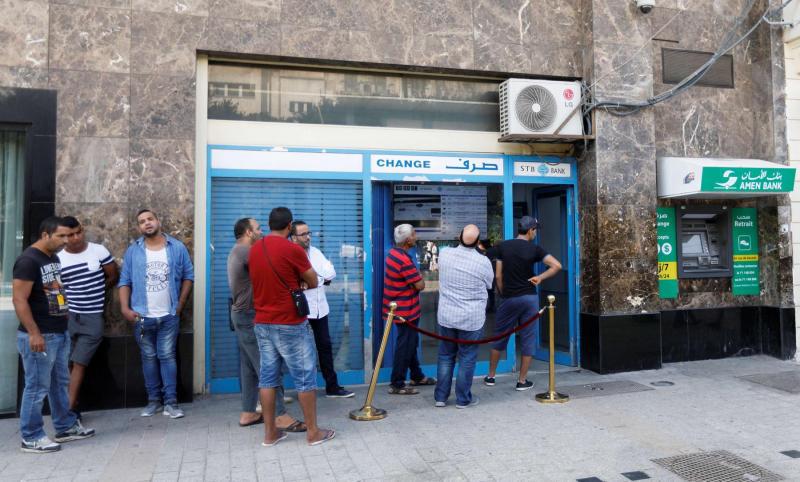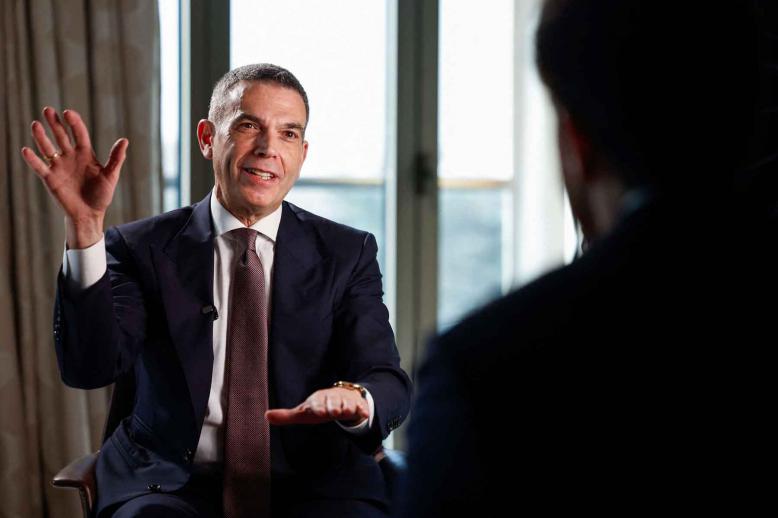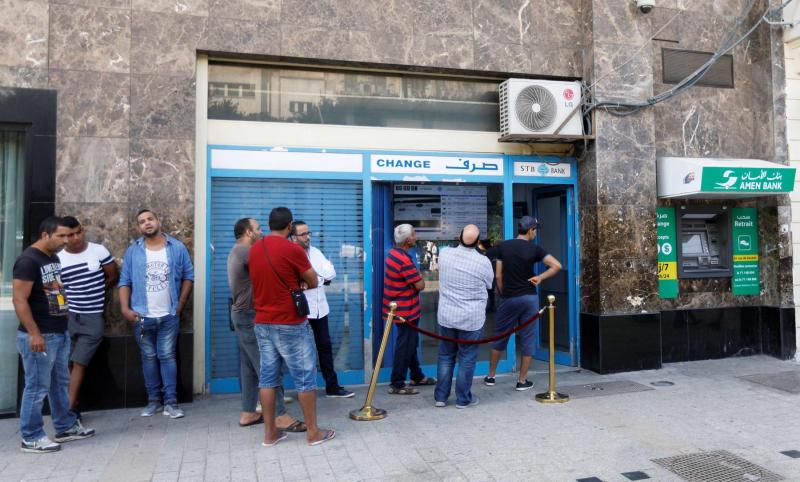Tunisia’s borrowing not a solution to economic crises
TUNIS - Tunisia’s borrowing trends are raising concerns among economists and citizens that the country’s crisis will worsen in the next five years if loans are not appropriately invested.
Amid power-sharing disputes among the leading parties after recent legislative elections, discussing the 2020 budget in the parliament is looking to be particularly difficult, given the size of the proposed budget and measures proposed to meet its large deficit.
Tunisians see only a dim light at the end of a long tunnel of economic crises and the heavy legacy of years of political and security turmoil casts a shadow over the economic situation.
Tunisia’s addiction to international borrowing has escalated since 2016 in the hope of quick solutions to the country’s chronic problems, regardless of the high debt service costs involved. Tunisia’s growing debt continues to accumulate without positive results.
Perhaps the best illustration of the situation is the $2.9 billion loan from the International Monetary Fund (IMF) to carry out reforms that turned out to be extremely slow to put in place. Tunisia has received $1.6 billion of the total loan.
Tunisia’s debt to GDP ratio was expected to reach 75.1% by the end of 2020, compared to 37% in 2010.
Tunisian authorities, however, resorted to borrowing from other financial institutions, such as the World Bank, the African Development Bank and the European Bank for Reconstruction and Development, to raise liquidity exceeding $3 billion, without counting international aid and donations in millions of dollars.
Instead of investing the money borrowed in development projects that would create wealth and curb the unemployment rate that has not budged for years from 15.5%, the government has directed the loans into covering running expenditures, consumer products and public sector wages.
Despite the mounting burden of loans, which is likely to place enormous strain on the state and mortgage the future of future generations, authorities see no other options, confirming their failure to initiate a development model that promises to be fair to all regions of the country and achieve social peace.
Tunisian Finance Minister Mohamed Ridha Chalghoum said in October that “the state will repay next year’s debts worth 12 billion Tunisian dinars ($4.2 billion) and will have to borrow about $4 billion more.”
He tried to reassure public opinion by saying that all scheduled development projects were funded but also said that “discussions now are limited to budget financing with the World Bank, the European Union, Germany and Japan.”
“We expect to get the remaining instalments through the programme agreed upon with the IMF and the rest of the funds will be through the international financial market,” Chalghoum said.
Looking at measures Tunisian authorities are planning to address the huge deficit, there do not seem to be any innovative solutions different from those employed in neighbouring countries. Along the austerity measures and tax increases, there are plans to cut down on subsidy programmes for basic commodities such as fuel, electricity, water, petrol and other services.
Tunisia’s external debt at the end of 2010 was about 37% of GDP but it has increased in the last nine years as growth slowed down alarmingly.
Economist Walid Ben Saleh said Tunisia’s debt will be approximately $32.3 billion by the end of 2020, equivalent to 75.1% of the country’s GDP. By the end of 2019, Tunisia’s debts will have reached about $30 billion, a huge amount given the economic recession engulfing most strategic sectors, except the tourism sector, which has seen a significant growth.
Ben Salah said in a statement that the share of each Tunisian citizen in the country’s debts will amount to about $2,800 by next year, compared to the $2,600 expected by
the end of 2019.
Considering these data, it is difficult not to take a pessimistic view of Tunisia’s economic situation, although some contend that the state can afford its debts despite the fragility caused by the growing external debt.
In their view, the debts and their high interest rates represent a moderate level of risk, compared to other countries in the Middle East and North Africa, such as Lebanon, Jordan and Egypt.
On the other hand, a different camp says the best way to deal with any economic crisis is not to automatically seek foreign loans and aid but to foster an investment climate that reassures local and foreign investors.
Economist Anis al-Gasmi said, to achieve this goal, efforts to deal with corruption and administrative bureaucracy must be accelerated. Despite the government’s efforts and despite its focus on development in the strategic sectors, bureaucracy and administrative corruption seem to have become even more widespread since 2011.
He said the focus should be on developing the agricultural sector and on better exploitation of the country’s phosphates reserves, as well as on establishing broader partnerships between the public and private sectors and the adoption of a plan to develop other sectors so they keep functioning in all circumstances.
Riadh Bouazza is a Tunisian writer.
This article was originally published in The Arab Weekly.







